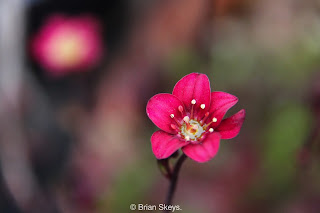Every Easter Sunday the Easter Bunny hides easter eggs in Our Garden@19 for the Grandchildren to find.
Searching the garden for the elusive Easter Bunny...
The obvious place to start is in the Spring Garden where the Tenby daffodil is flowering...
...with primroses and Pulmonaria Sissinghurst White
...around the garden the various Hyacinths are showing off, I think their flowers look like pixy or fairy hats...
 |
| H.Pink Pearl |
 |
| H.Carnegie |
 |
| H.Blue Peal |
Some plants in the garden are too small to hide an Easter Bunny, the wild celandine, which I love to see flowering in the spring, although it is very invasive...
...is complemented by its much smarter cousin Ranunculus 'Brassen Hussey', discovered by Christopher Lloyd growing in the woods at Great Dixter.
The forget-me-not blue Brunnera macrophylla...
... Chionodoxa luciliae growing in an old tin bath
...and Anemone nemerosa are too small.
Saxifrage drendsii 'Highlander'
...along with a delicate contribution from Saxifrage 'Nottingham Gold'.
In the Oriental Garden, where for Easter, a pair of ducks had taken up residence by the water feature...
...along with the Corylus avellana 'Contorta'...
Magnolia 'Stella'
In other areas of the garden the Magnolia x soulangeana 'Lennei' is providing colour against a blue sky...
Searching through the foliage in the garden, there are the emerging leaves of Erythronium Pagoda...
...alongside the beautiful patterned leaves of Arum italicum subsp. italicum ‘Marmoratum’,
whose name an Easter Bunny could hide behind...
...an ideal hiding place would be among the coloured foliage of Chionochloa rubra...
...the bees are busy searching the flowers of the Ornamental Cherry looking for their easter present.
In pots on the patio is the first tulip to flower, Passionale...
...alongside the Malus Golden Hornet underplanted with 'tete-a-tete narcissus, behind which is hiding...
... among the primroses, two small Easter Bunnies with Easter eggs and 'Carrot sweets.'
The grandchildren had made cakes for easter tea.
...Mmm...
What did you find hiding in your garden this Easter?
Crocheting by Mary See more here
Please click on any picture to create a slide show.




























































